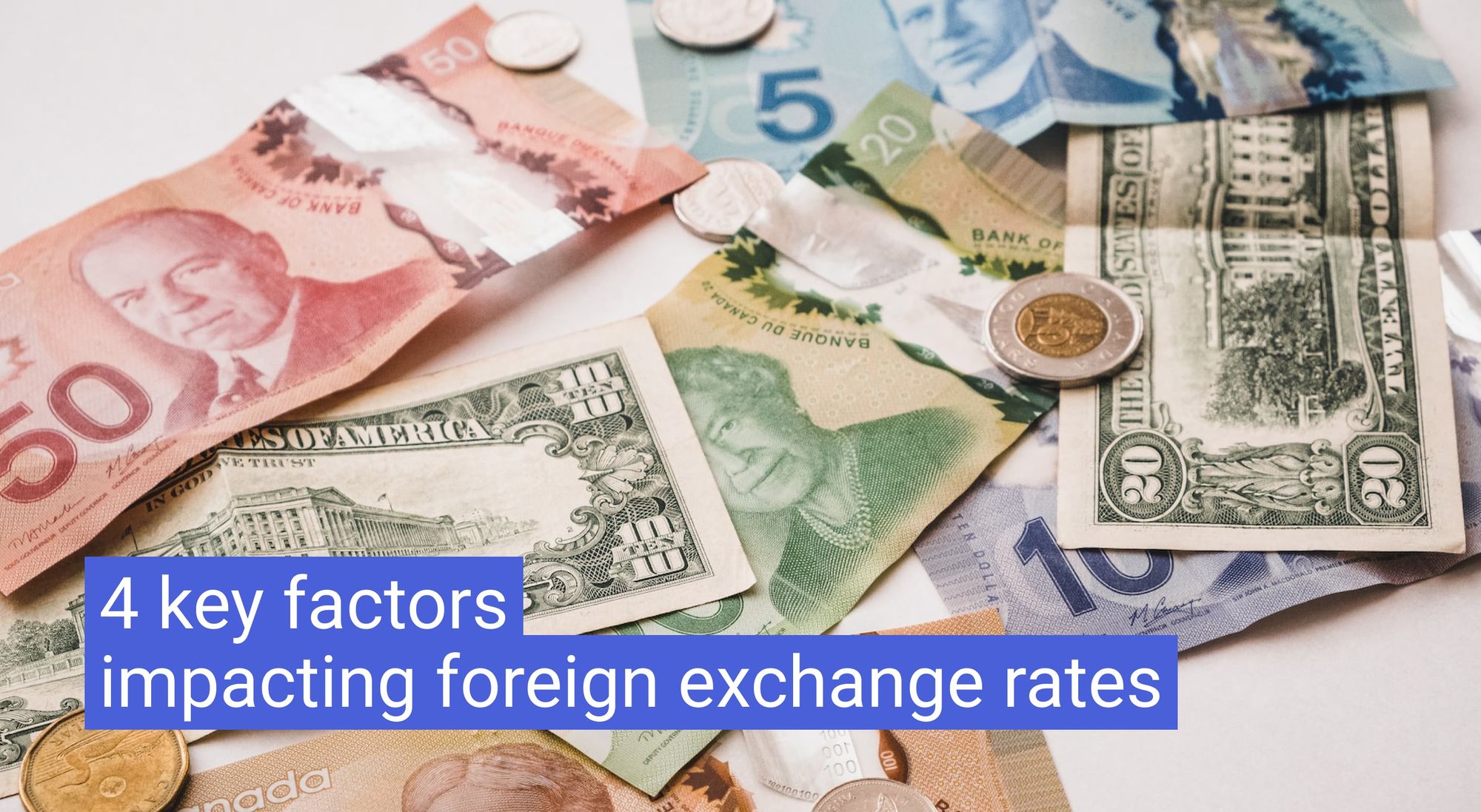4 key factors impacting foreign exchange rates

Interest rates continue to rise in Australia and across other major economies in response to the increasing price of goods and services, known as inflation. For businesses operating across borders, understanding how higher interest rates can affect international supplier relationships and foreign exchange exposures are crucial.
In this article we'll discuss the impact that higher interest rates have on global currencies, as well as what other factors can influence FX rates.
Key factors influencing currency & foreign exchange rates
Interest Rates & Inflation
As we mentioned earlier, inflation is the rate at which the cost of goods and services rise over time. Interest rates, on the other hand, are the rate at which banks are charged to borrow money. How are the two related? Well, in periods of lower interest rates, when the cost to borrow money is less, people tend to spend more. And when people start to spend more, particularly if they are all buying the same things, then the costs for those goods or services increases. So, interest rates are a tool by which the central bank tries to control inflation.
A period of rising interest rates is usually followed by a rise in the value of the local currency. This is because foreign investors from economies with lower interest rates are buying currencies where there are higher rates, or 'yield'. But this is a tricky balance. While higher interest rates are usually a sign of healthy economic growth, interest rates that rise too quickly could signal an economy in trouble due to out-of-control inflation.
Economic Data
Economic data is a key indicator of a country's economic performance. Strong economic data signals to outside investors if an economy is healthy or not. Some examples of important economic data are consumer spending figures, inflation data (CPI), unemployment data and gross domestic product (GDP). A country which has a more stable economic and political environment is more likely to attract foreign investment. An increase in foreign capital will drive up the value of the local currency.
Government Debt
This is the total amount of national debt that is owned by the central government. Public debt can be useful - for example if a government needs to fund a big public project. But a country with an outsized amount of public debt is less likely to attract foreign investment and acquire foreign capital, because it can lead to inflation. When a government issues debt they are selling bonds in the open market to foreign and domestic investors. If holders of these bonds foresee that the central government is issuing an unhealthy amount of debt to fund operations then they may sell their existing bonds in the market, which will drive up the cost of borrowing for the government (when bond prices go down, bond yields go up).
Current Account Deficit
Current account is the balance of trade between a country and its partners. A country whose value of imports far exceeds its exports will have a current account 'deficit', since it is spending more on goods than it is earning. Conversely, a country that exports more than it imports would have a 'surplus'. Countries with a current account deficit need more foreign currency than they can gain on their own through overseas demand for their goods or services. This leads to a lower exchange rate to give more foreign consumers and investors greater purchasing power.

